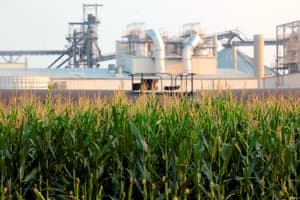The chance of having years that are both extremely warm and extremely dry — conditions that pose a serious threat to agricultural systems — has doubled around the globe since 1931, according to a new study published in the journal Science Advances. The research attributes this change almost entirely to human-driven climate change.
The study, conducted by scientists at Stanford University and Charles III University of Madrid, also found an uptick in dry and severely warm conditions in multiple key agricultural regions in the same year, which reduces the possibility that surpluses in one location can make up for low yields in another.
“When we look in the historical data at the key crop and pasture regions, we find that before anthropogenic climate change, there were very low odds that any two regions would experience those really severe conditions simultaneously,” Stanford climate scientist Noah Diffenbaugh, lead author of the new study, said in a statement. “The global marketplace provides a hedge against localized extremes, but we’re already seeing an erosion of that climate buffer as extremes have increased in response to global warming.”
Diffenbaugh and his colleagues also found that the frequency of these simultaneous hot-dry conditions will continue to increase, by about 20 percent, over the next three decades if nations don’t drastically reduce their greenhouse gas emissions, E&E News reported.



